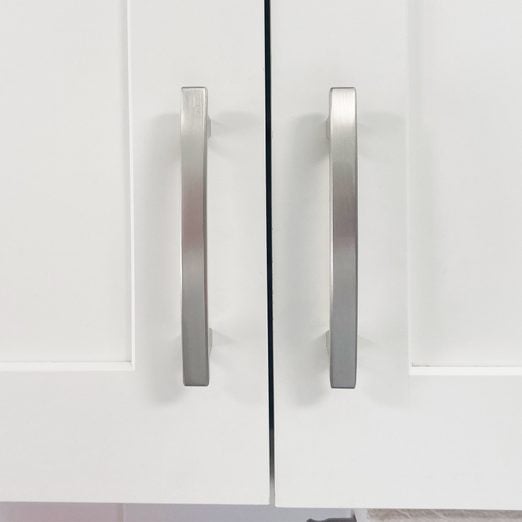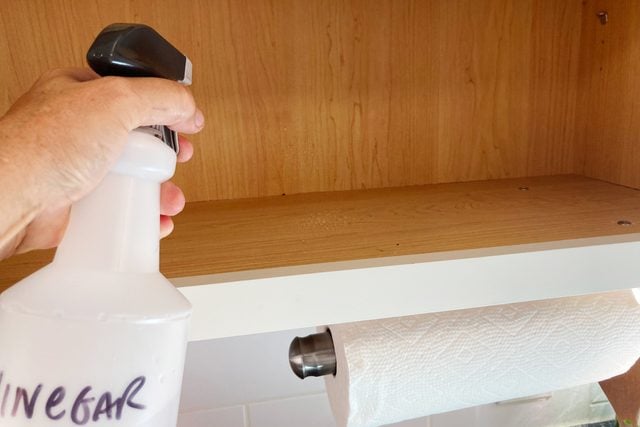How To Clean Kitchen Cabinets
Updated: May 26, 2023
Are you ignoring your dirty, greasy kitchen cabinets? Cleaning them doesn't have to be a chore. Get your kitchen sparkling again in five simple steps.
A few hours
Beginner
Less than $20
Introduction
No one likes to clean kitchen cabinets. The task seems insurmountable, especially if you have lots of them. The good news? If you clean up spills immediately and spot-clean the handle areas when needed, the heavy lifting only needs to be done quarterly.
If your cabinets have seen better days, this easy, satisfying project will brighten them right up. You don't need to buy a bunch of expensive products, either. Dish soap, vinegar and baking soda, along with some basic cleaning tools and elbow grease, will get your kitchen cabinets looking great.
Tools Required
- Bucket
- Clean spray bottle
- Microfiber cloths
- Non-abrasive sponges
- Toothbrush or other soft brush
Materials Required
- Baking soda
- Dish soap
- White vinegar
Project step-by-step (5)
Prepare cleaning solutions
- Fill spray bottle about halfway with distilled white vinegar and top off with water.
- Clearly label the bottle for future reference and for safety.
- Squirt a few drops of dish soap in bucket or bowl.
- Don’t go crazy. Dish soap is highly concentrated and excess suds will have to be rinsed off.
- Fill bucket with hot water.
- Hot water helps dislodge dirt and grease, but don’t burn yourself.
- Prepare another bucket with clean water, or plan to use the kitchen sink to rinse your sponge or cloth periodically.
- Don’t put a dirty sponge or cloth in the clean suds or you’ll transfer dirt back to the cabinets.
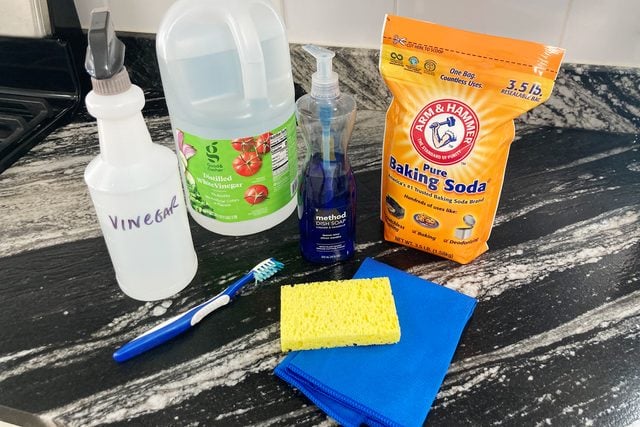
Clean cabinets with soap and water
- Dunk your sponge or microfiber cloth in the suds and squeeze out excess water.
- Start at the top and wipe down cabinet doors inside and out.
- Rinse the dirt from your cloth or sponge frequently with clean water.
- Change the rinse water periodically if you’re using a separate bucket.
- Re-load the sponge with fresh soapy water and continue.
- Scrub the areas near the handles or knobs to remove fingerprints and greasy residue.
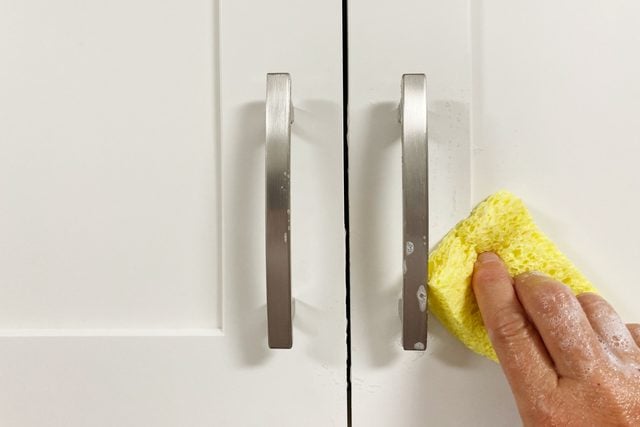
Rinse cabinets with clean water
- Wet a fresh microfiber cloth or clean sponge.
- Wipe down cabinets to remove any soap residue.
- Dry with a fresh microfiber cloth.
- Water left behind can warp wood and laminate and rust hinges.
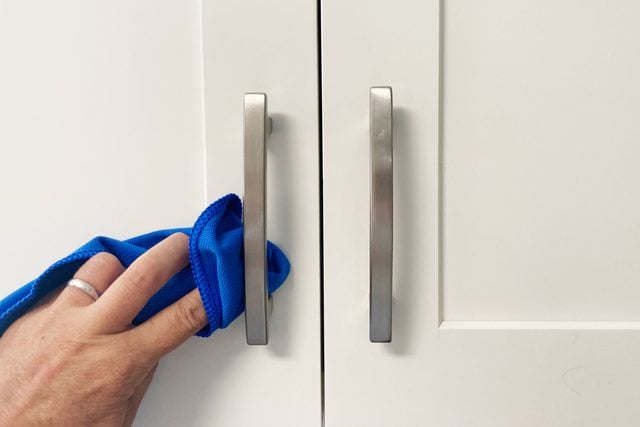
Remove tough stains
- Clean with soap and water first.
- Elbow grease and soap works on most dirt and grime.
- Soak crusty food or grease for a few minutes to break up stubborn stains.
- Wipe clean, rinse and dry.
- Use vinegar solution or baking soda for persistent stains.
- Test inconspicuous area first before applying either cleaner on stained wood cabinets. Then wipe off immediately.
- Inside cabinets: Wet toothbrush, dip in baking soda and scrub.
- Outside cabinets: Spray with vinegar solution and wipe clean.
- Rinse with damp, clean cloth and dry.
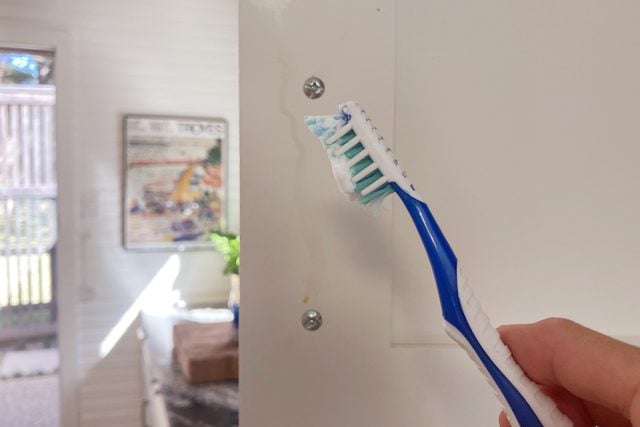
Clean and dust cabinet shelves quarterly
- Remove dishes, food, etc.
- Spray cabinet shelves with vinegar solution and wipe dry.
- Soap and water may be used but must be rinsed to remove residue.
Pro tip: Instead of cleaning all the shelves at once, divide cabinets into three sections and rotate cleaning each group monthly.

